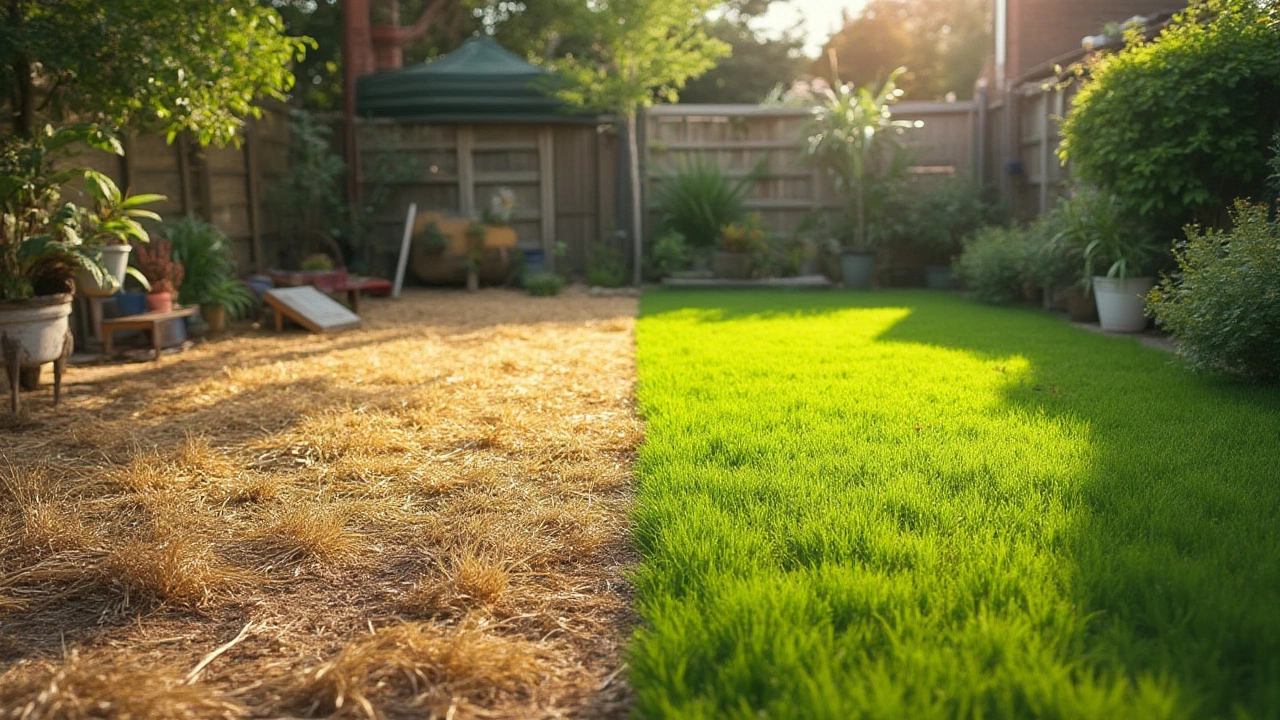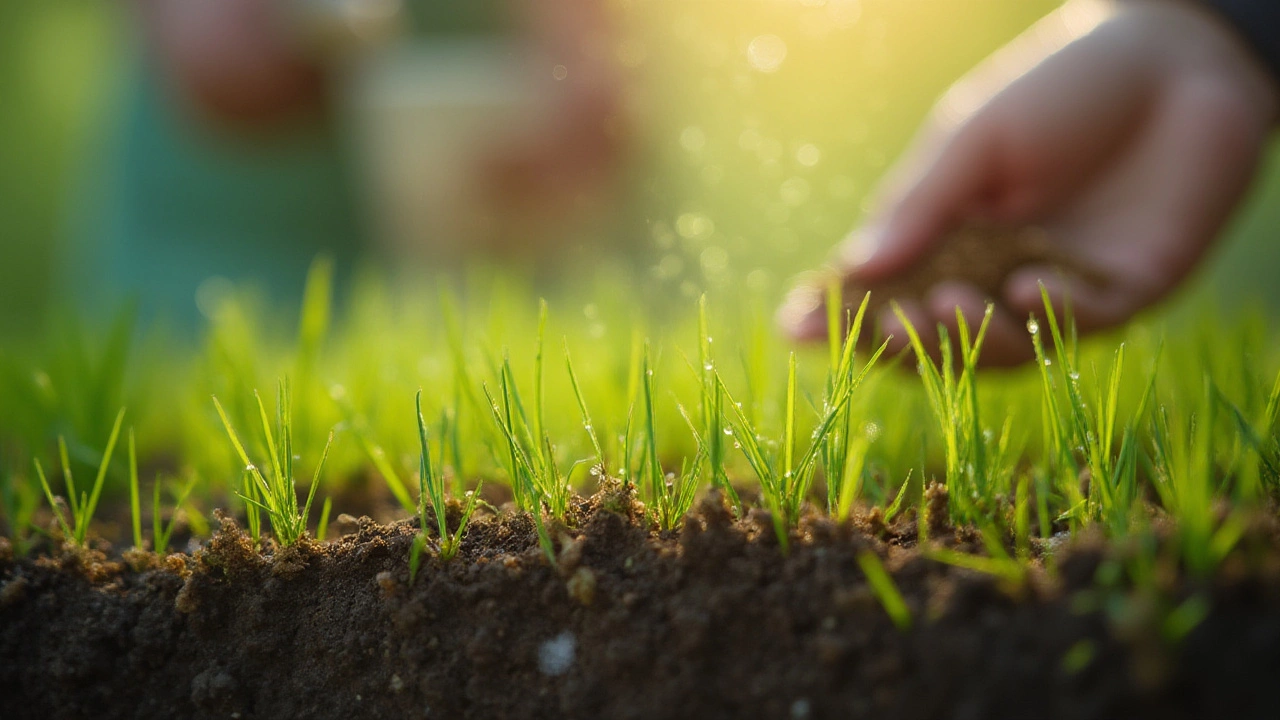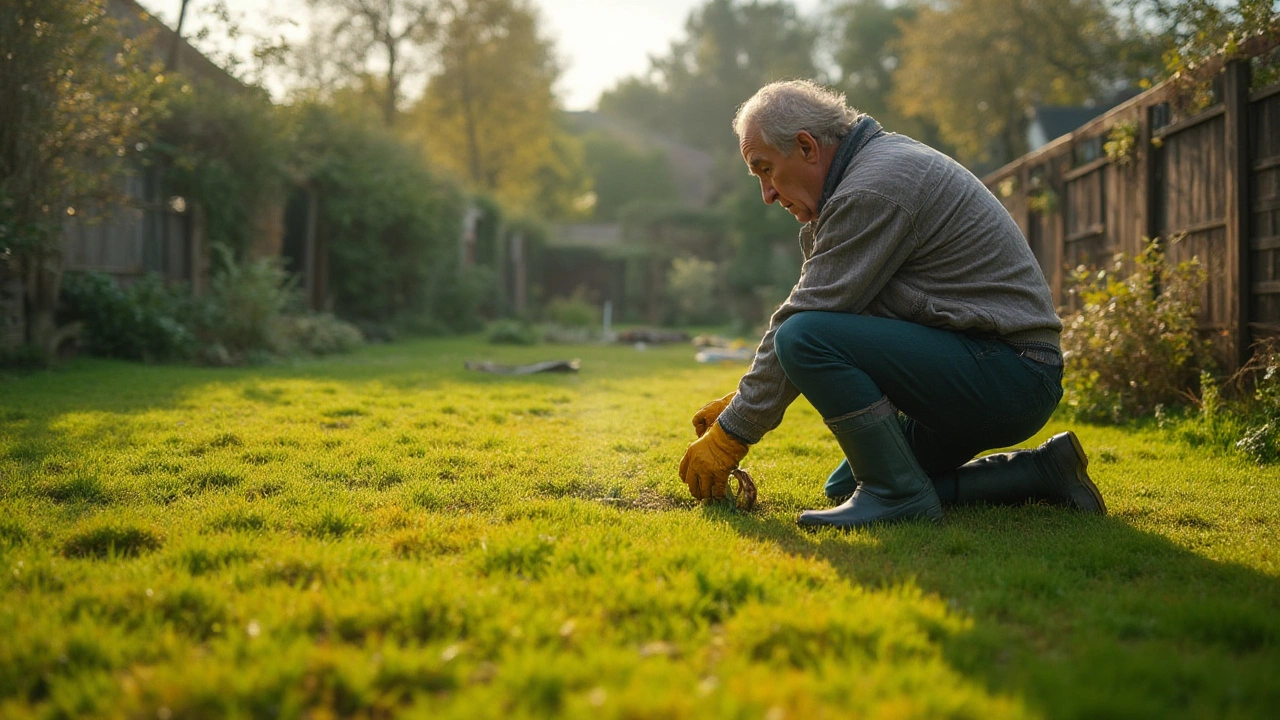Ever spotted yellow or brown patches taking over your lawn after trying to give it a feeding boost? That sense of dread when your effort to help actually makes things worse — that’s nitrogen burn. Just last summer, I dumped too much feed on my own Brighton patch, eager for thick green grass for the kids. Instead, I watched ugly streaks appear, mocking my ‘success.’ If you’ve done the same, you’re not alone. Loads of folks end up in this spot, thinking their lush green dreams are down the drain. But does grass really bounce back after this fertilizer fiasco? Or is it destined for the compost bin?
Why Nitrogen Burns Lawns
Let’s get to the root of the problem — literally. Grass absolutely needs nitrogen to look healthy and green. That’s what most lawn feeds advertise: stronger shoots, vibrant color, faster growth. The trouble kicks in when too much nitrogen hits the soil at once. Think of it as giving your toddlers a kilo of chocolate — disaster is guaranteed. High concentrations of soluble nitrogen in fertilizer (like ammonium nitrate or urea) will sit near roots, drawing water out through a process called reverse osmosis. Instead of the grass absorbing water, it actually loses it. That’s why those burnt streaks or patches appear days after fertilizing lite.
And it’s more common than most admit. A 2022 study by the Royal Horticultural Society found that over 38% of UK householders had accidentally caused lawn damage with fertilizer at some point. Spring and midsummer are peak times for this blooper, since that’s when folks are most eager to see rapid improvement. Climate really matters, too: in Brighton, days of rain after fertilizing wash nutrients into the roots slowly, but on a hot week, there’s no buffer. This creates those signature brown patches especially where fertilizer granules land in clumps.
Pets and kids don’t help the math, either. Dog urine contains plenty of nitrogen, causing mini burns that look suspiciously like fertilizer damage. If you watch neighbourhood dogs on their daily walk, notice those yellow rings popping up on verge grass: same chemistry, just less predictable. Some lawn pros even map toxic nitrogen spots left by pets and compare them to fertilizer burns — it’s almost impossible to tell the difference with the naked eye.
To make it worse, the kind of fertilizer matters. Granular feeds, if not watered in, linger on the grass and burn leaves before they even reach the roots. Fast-release synthetic products act aggressively, while organic slow-release formulas cause less drama but still pack a punch if dumped in excess.
All this boils down to one hard fact: when your lawn gets more nitrogen than it can handle, water gets pulled away from roots, cells dehydrate, and the grass tissue dies off. No amount of wishful thinking will reverse that chemical chain reaction overnight. But the story doesn’t have to end here.

Will Grass Grow Back After Nitrogen Burn?
This is the question every worried parent, pet owner, or proud gardener asks. Good news: most grass types can recover from mild to moderate nitrogen burn if you act quickly and give roots a chance. Recovery depends on a bunch of factors—how concentrated the fertilizer was, how long it stayed dry on the blades, the type of grass you have, and how soon you kick off repair efforts.
Let’s be specific. In the UK, most lawns use ryegrass, fescue, or bent. Studies from the University of Reading say that ryegrass and fine-leaved fescue can spring back if burn covers less than 50% of the plant and soil stays moist for the next few weeks. Bentgrass is a bit more sensitive but even it can regrow from surrounding healthy tissue. Think of it like a bad haircut — it’ll look patchy, but within a month, it may fill out nicely with proper care.
To be crystal clear, the part of the grass blade that’s fully brown won’t ‘turn green’ again. Once the plant tissue is toasted, it’s dead. The magic actually happens in the crown — that tiny, pale bit at the base where all new shoots appear. If the crown survives, the grass can pop up fresh blades when conditions improve. Typically the upper surface may look worse than it is because dead blades stay upright for weeks, masking new growth emerging underneath.
How fast does regrowth happen? Here’s a simple comparison shared by RHS:
| Condition | Days to Possible Regrowth | Typical Recovery Odds |
|---|---|---|
| Mild burn (yellowing) | 7–21 | About 90% |
| Moderate burn (brown with green margin) | 14–35 | 75–80% |
| Severe burn (full brown, crispy, no green) | Over 40, may require reseeding | 30–40% |
It’s not just about time. Heavy rainfall right after the spill helps dilute nitrogen; that’s why sometimes you get away with a mistake. Water molecules shove those extra ions deeper into soil, where roots are less concentrated, meaning less damage. On the flip side, if the weather stays hot and dry, the fertilizer saps the last droplets from the plant, making things far worse. I always cross my fingers for a decent bit of ‘Brighton drizzle’ after feeding the lawn — nothing fixes a disaster like a classic wet weekend!
Don’t ignore the patches, hoping ‘nature will sort it.’ Dead zones may become weed magnets, since weeds love a thin, bare spot. Best strategy? Intervene early. I learned that dragging the kids’ paddling pool over a burnt patch and soaking it with several buckets of water starts things off right. Big doses of water dissolve and flush some of the excess nutrients beyond the top root zone, lessening further damage.
If after 3–4 weeks the patch is showing zero fresh green tufts, the roots are likely gone. That’s when it’s time to reseed, but more on that in a bit. The main takeaway? Don’t write off your lawn at the first sign of scorch; grass is far more resilient than it looks — and so are us parents after a gardening blunder.

How to Fix and Prevent Nitrogen Burn
So you’re staring at yellow or brown scars in your once-promising lawn and wondering what you should actually do. First tip: don’t panic-prune or start dumping more products. The more you interfere in a rush, the harder it is for the grass to recover. Instead, follow some clear steps.
nitrogen burn isn’t a death sentence for your lawn, but an opportunity to learn and get a greener, thicker result next time. Here’s what to do:
- Irrigate immediately: Drench the affected spot with water as soon as you suspect burn. Lay the hose in place for 30–60 minutes if possible, no sprayer attachment, just a steady trickle. You’re trying to wash away the excess nitrogen. Do this daily for a week if weather is dry.
- Monitor and wait: Don’t mow scorched areas for at least 10 days. Let healthy roots focus on recovery. Don’t walk on them, either: compacted burnt patches recover way slower.
- Trim only as needed: If you must mow, keep the height high. Long blades shade and protect the crown, boosting chances of regrowth.
- Remove dead debris: Gently rake up completely dead, brown blades after a few weeks. This stops disease and makes space for new grass to fill in.
- Check for regrowth: After 2–3 weeks, peek below the surface. Fresh green shoots mean the roots are still alive. If nothing appears, put reseeding on your calendar.
- Overseed if needed: Use the same grass seed as your existing lawn. Rough up the soil surface, sow thickly over dead spots, press down, and keep wildly moist for a fortnight. A bit of topsoil or peat helps, but don’t overfertilize this time!
Want to avoid a repeat drama next season? Here are a few proven hacks:
- Always measure your fertilizer. Eyeballing it almost always ends badly — use a kitchen scale or scoop, and check spreader settings for your lawn size.
- Switch to slow-release or organic feeds. They’re much less likely to cause burn because they ‘feed’ at a snail’s pace.
- Try liquid feeds for smaller lawns. They’re easier to apply evenly and dilute fast in rain or with the hose.
- If you’ve got kids or pets, space out feeding days, and supervise closely. I wait for a kid-free hour, feed, then water heavily before the stampede returns.
- Keep a logbook or note on your phone about what product you used, when, how much, and what the weather was like.
My Marlon once thought ‘feeding the grass’ meant dumping entire boxes of chicken manure pellets into a circle for fairy rings. The grass never recovered... but the lesson stuck: more is rarely better. Proper tools make a difference: rotary spreaders, not handfuls. And if you ever fancy achieving pro-level stripes like Brighton’s cricket pitches? That’s down to patience and measuring, not ‘secret’ products.
If you’re a stats person, table below summarises the key differences among fertilizer types and their burn risk:
| Fertilizer Type | Release Speed | Burn Risk |
|---|---|---|
| Fast-release synthetic (granular or liquid) | 1–3 days | High |
| Slow-release synthetic | 14–45 days | Low–Medium |
| Organic feeds (manures, compost) | Up to 60 days | Low |
| Pet urine | Instantaneous | High (very localised) |
A little background on why all this matters — burnt lawns rarely recover without human help. An Australian research paper from 2021 tracked 2,000 lawns for a summer and found that burnt patches treated promptly with water and reseeding regrew fuller and faster than areas simply left alone. So don’t give up on your lawn. With a bit of hands-on care and better habits, you can look forward to a springy, green patch under your feet — and the kids’ — once more.
If the worst case happens and you have big brown patches that never recover, remember: it’s just grass. The confidence that comes from fixing your own mistakes (and telling mates how not to repeat them) is worth every burnt blade. That, and never letting your kids near the fertilizer bag again.
